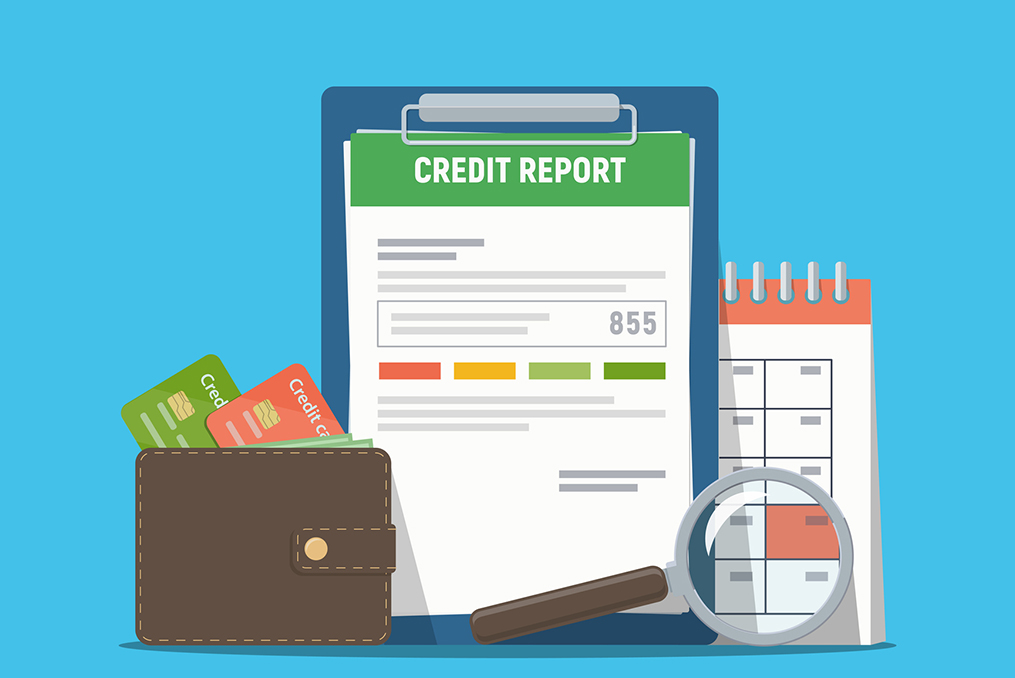Getting your finances in shape may sound like a daunting task, but it’s an important one. Your financial health will affect major decisions later on, like what kind of home you can buy or when you can retire.
The following six-step plan can put you on the right track. We’ll cover how to assess your financial health, set goals and follow through on them. You’ll find it’s fairly simple to find the information you need. Plus, knowing where you stand can help you confidently begin working toward your goals.
Step 1: Get your credit report.
The first step in any self-improvement initiative is identifying your starting point. If you want to lose 10 pounds, you need to know how much you weigh today. Understanding your current position in relation to your goal will help you plan out your next move and your journey overall.
Your credit score is an important indicator of your financial health, and your credit report will give you an in-depth look at what’s contributing to that three-digit number.
You can get a free credit report every year from each of the three major credit bureaus, TransUnion, Experian, and Equifax. You can order your report from AnnualCreditReport.com.
Step 2: Review your financial statements.
With the report in hand, take note of your credit score, the total amount of outstanding debt, and the number of active accounts you have.
You’ll also want to know your total debt and the interest rates on each form of debt―credit cards, mortgage, car loans, and student loans, for example. Organizing this information into a chart and spreadsheet may help you evaluate your financial plan.
Next, check the balances in your various accounts―checking, savings and retirement.
Finally, tally up your monthly expenses. Having an accurate account of your expenses will help define your personal cash flow. If you have annual, bi-annual, or quarterly payments, you should divide those into monthly increments or create an annual budget instead for a more accurate picture of your overall financial obligations.

Step 3: Identify financial risks.
Once you outline your financial profile, you may find areas you can improve. A few examples might be:
- A low credit score. 670-739 is considered good, 740-799 is very good and 800-850 is exceptional, according to Experian’s scale.
- Hard-to-manage debt. Any loans with a particularly high interest rate or a monthly payment you find stressful to cover could be an opportunity for a healthy change. It might be worth looking into credit counseling for advice on getting started.
- Difficulties managing money. Frequently experiencing overdraft or late payment penalties can hurt your ability to pay bills.
- Low savings. Three or more months’ living expenses in a savings account helps protect you from life’s emergencies.
- Incorrect information on your credit report. Incorrect information negatively impacts your credit score, and it’s up to you to correct it.
You may recognize several weaknesses that contribute to each other. Poor money management could lead to hard-to-manage debt, which could result in a low credit score. Identifying the situations and behaviors that lead to these issues is essential to sustainable financial health.
Step 4: Set SMART goals.
Once you identify your financial challenges, you can strategically work toward improvement. Setting SMART goals can set you up for success. They help you effectively and precisely outline the need-to-know details to ensure you can meet your objective. SMART goals are specific, measurable, achievable, realistic, and timely.

If you’ve identified your level of debt to be your biggest financial weakness, a SMART goal might be:
Cut credit card debt in half in the next six months.
- This is a specific goal that is measurable because you can see the amount of debt you have right now and can divide it by two to get your goal.
- You can use information about your monthly discretionary income and the amount of money you have in savings to determine if this is achievable and realistic. Keep in mind, just because something is achievable doesn’t mean it’s realistic. Perhaps you technically could dedicate 60 percent of your monthly income to debt payments, but considering the significant lifestyle changes that would require, it may not be feasible.
- By stating that you want to reach this goal by six months from today, you’re making it time-limited.
The average credit card balance in Oregon is $6,199, according to Experian. Half of this would be $3,099.5. The median household income in Oregon in 2023 was $80,426, according to the Census Bureau.
A report from the Bureau of Labor Statistics reported the average American dedicates:
- 6 percent of their budget to food
- 33 percent to housing, including utilities
- 8 percent to transportation
- 8 percent to health care
- 9 percent to personal insurance and pensions
After these expenses, the average consumer would have 18.7 percent of their income left over―that’s $10,758.48 for the year or just under $900 per month. Some of the remainder will go toward other things, like taxes, education, or entertainment. Determine how much left over is feasible to allocate toward debt payments.
You’ll likely identify multiple financial goals for yourself, but it may not be possible to begin working toward them at the same time. You’ll need to prioritize one over another. For example, you might set goals to pay down two different debts, so you may need to choose which you’ll focus on first.
Step 5: Create a budget.
Most of your goals will require you to adjust your spending habits. Creating a budget is like creating a roadmap to help you reach your final destination. You’ll list your take-home income and determine which expenses it will go toward, including rent, utilities, debt payments, savings account contributions, and fun purchases like a date night or a fund to pay for an annual vacation. When creating your budget, make sure it suits the goals you identified in step four―although some events may seem far off, it’s important to account for retirement and saving for your child’s education.
Step 6: Review and adjust your plan regularly.
Your financial health is constantly evolving. Just because you’ve met a specific goal, that doesn’t mean there’s nothing else you can do to improve.
Make a point to check in on your progress and financial health so you can identify new goals. Review your budget monthly and adjust it when your financial situation changes or when you complete one of your goals. For instance, once you’ve paid down debt or built up a comfortable amount of savings, perhaps you’ll shift your focus to the long-term and increase your savings for retirement or invest with the help of a Financial Advisor.
Don’t have a dedicated Financial Advisor yet? Find a local advisor near you.






